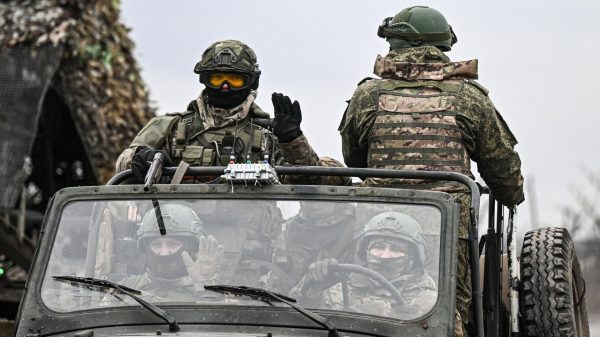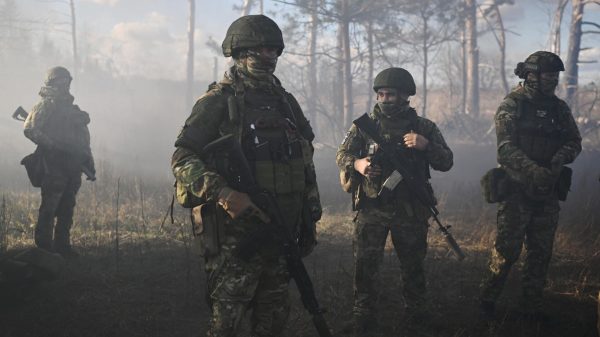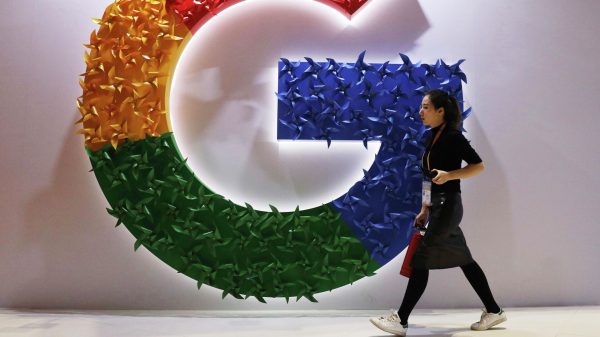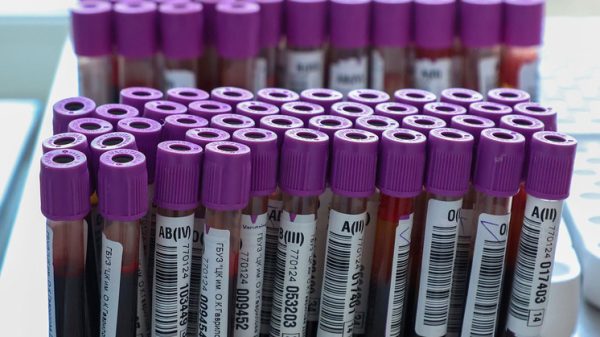
California this week became the first US state to record 3m Covid-19 infections. But, within its borders, Californians have been living through two different pandemics. As the north begins to see encouraging signs that the latest, most severe period of the crisis is beginning to abate, southern California and the central valley have continued to face a deluge.
“For us, the pandemic has been coming like a slow drip, whereas in Los Angeles it’s been like an explosion,” said Dr Peter Chin-Hong, an infectious disease specialist at the University of California, San Francisco.
In LA county, which has recorded more coronavirus cases than any other county in the US by far, an estimated one in three people have been infected with the virus at some point during the pandemic, and more than 14,600 have died. For weeks, hospitals – and especially their intensive care units and emergency rooms – have been packed beyond capacity, pushing them to prepare for the worst-case scenario of having to ration care. Hundreds each day are being brought from overcrowded hospitals to overflowing funeral homes.
covid hospitalizations
About 350 miles north, in the Bay Area, hospitals have been strained, but not to the same extent. Intensive care unit capacity there remains low, but Chin-Hong and his colleagues have started discussing the practicalities of taking in patients from regions that have no remaining ICU beds.
Even farther north, some counties, including in the Sacramento area, saw their stay-at-home orders lifted in mid-January. Doctors across the state have been discussing what is driving the disparities between north and south “with horror and curiosity” at Chin-Hong said.
Differences in income, wealth and housing across the state are contributors, experts told the Guardian, as is a growing resistance to lockdowns in the south. At some point this winter, a confluence of factors “helped the virus take hold and really gain momentum”, said Anne Rimoin, an epidemiologist at the University of California, Los Angeles. “And it became very, very hard to stop.”
Vulnerable communities, limited resources
During the first 10 or so months of the pandemic, Los Angeles county counted about 500,000 coronavirus cases. Over the past month, the region has more than doubled that number. “Anytime people leave their houses, it’s a risk,” Rimoin said.
At the Olympia medical center in LA’s mid-Wilshire neighborhood, ER nurse Shenita Anderson said accommodating the rush of patients who show up at the hospital throughout the day and night can sometimes feel like playing a game of Tetris.
For us, the pandemic has been coming like a slow drip, whereas in Los Angeles it’s been like an explosion
Dr Peter Chin-Hong
“Just because you don’t have any ICU beds, that doesn’t mean you don’t have ICU patients,” she said. Her overnight shifts have often required making constant calculations about how to isolate coronavirus patients from others, checking in on the dozens of patients inside the waiting room and in tents outside, hunting for a room – any room – for those who need breathing treatment.
At hospitals like Olympia, who primarily serve low-income Black and Latino communities, many of the Covid-19 patients include not only seniors, but also workers at grocery stores and warehouses for whom staying home is not an option.
That’s the case across California, where frontline essential workers are much more likely to be people of color, and much more likely to be immigrants, an analysis by the nonprofit news organization CalMatters found. They’re also more likely to fall below the poverty line.
And while these links between housing, wealth, race and ethnicity, and essential worker status exist across the state – and the US – in southern California, including Los Angeles, there are simply more essential workers living in overcrowded homes, unable to quarantine away from vulnerable relatives. LA has the highest percentage of overcrowded homes of the 25 biggest metropolitan areas in the US.
“What we would call exposures to the virus are really heightened for the most vulnerable communities, with limited resources,” said Chandra Ford, the director of the Center for the Study of Racism, Social Justice & Health at UCLA.

The most vulnerable communities also tend to have least access to medical care, as hospitals in poor, densely populated communities of LA have been overwhelmed amid the most recent swell of coronavirus cases. “It’s been devastating to see,” said Anderson.
Anderson has been triaging Covid-19 patients throughout the pandemic, clocking into long overnight shifts at the ER, including while she was seven-months pregnant. “I decided to stay working at Olympia because the people I was able to serve really depended on us, who really needed the care,” she said. So it was a gut punch when she found out, on New Year’s Eve, that Olympia would be closing permanently in March due to financial troubles. “That in the middle of the pandemic, a decision was made to relieve this community of this resource – it’s just obscene,” Anderson said.
The closure of Olympia will come just over a year after St Vincent medical center – another LA hospital that served mostly low-income, elderly patients – shuttered. Elderly Black people and people of color in the region have diminishing options for medical care, Anderson said. “What is happening is gross negligence.”
Some patients could be transferred to trauma care centers or other hospitals, but those will continue to be overwhelmed for months. “No doubt people are going to die, some of these people are going to die” she said.
‘I can’t grieve’: LA families wait months to bury loved ones as Covid deaths rise
Read more
Similar issues – overwhelmed hospitals with 0% ICU capacity, supply and staff shortages – have plagued the Central Valley. As in LA, essential workers in the agricultural region – especially Latino workers on farms, at meat-processing plants and other processing facilities – have been the ones who are worst affected, with the least access to care.
Los Angeles county has recorded about 10,300 cases per 100,000 residents, and Fresno county in the Central Valley has counted 8,400 per 100,000. Meanwhile, San Francisco and Santa Clara counties in the Bay Area have been tallying about 3,300 and 4,900 cases per 100,000, respectively.
While LA county has about three beds available per 100,000 residents, the San Francisco has about eight.
At Regional medical center in East San Jose, one of the hardest-hit hospitals in the Bay Area, the emergency medicine director, Dr Paul Silka, said they were treating Covid-19 patients in the hallways a few weeks ago, after running out of rooms. “All this was full,” he said, as he gave the Guardian a video tour of the ER. “We’re still seeing a steady stream of Covid-19 patients,” he said, but over the past week, the pace has slowed, giving way to uneasy relief. “I’m still waiting for the other shoe to drop,” he said.

But the hospital hasn’t fared as badly as those in the south, he said. Whereas some southern California and Central Valley hospitals have had to seriously consider rationing care, “over here, we’ve dusted off contingency plans, but haven’t needed to put them in place,” Silka said. “I’ve not been asked to shut off or conserve oxygen to a patient,” he said, or make some of the heart-wrenching decisions EMTs and ER staff in LA have had to do. Regional’s ambulance bay has been full, but ambulances have never had to wait or circle the hospital for hours, as they’ve had to do down south.
Still, Regional has been more overloaded than other hospitals in the area in large part because of its location, Silka said – East San Jose is a middle and working-class neighborhood in the shadow of mega-wealthy Silicon Valley. Many of Silka’s patients have been Latino and Asian American essential workers. “In that way East San Jose is like a smaller East Los Angeles,” he said.
Poor people of color across the state had been falling through the cracks of a “fragmented health system” long before the pandemic hit, he added. “And now those cracks have formed into bouts and valleys of despair.”
Public health resistance
In the first week of the new year, the LA county emergency medical services agencies told ambulance crews to stop transferring patients with slim chances of survival to the region’s overloaded hospitals. That same day, a group of anti-maskers stormed the Westfield Century City mall in Beverly Hills, trying to push down the doors of a Steve Madden and harassing shoppers at a Ralphs grocery.
The same week that the county’s health director told essential workers that some of them should start wearing masks at home to protect their loved ones, maskless demonstrators took to an upscale grocery store in LA’s Fairfax district. Similar demonstrations have taken place recently at a Trader Joe’s grocery in Fresno. And in Orange county, south of LA, local lawmakers and law enforcement resisted mask mandates throughout the pandemic.
It’s not just protesters – Anderson said she has been frustrated seeing people in the city let their guard down. “When the pandemic first hit, people in LA seemed to take public health directives seriously,” Anderson said. “We were all definitely afraid, and I could see it in traffic – you know I could get to Olympia in 15 minutes – and I live 20 miles away.” But 10 months later, she said she sees more people out on the street, mingling, frequenting shops and other businesses that – to Anderson’s dismay – remain open under state and county orders. “It’s been back to business as usual,” she said.

While some parts of northern California have seen similar resistance to public health guidelines, the Bay Area has not seen many high profile, organized protests. “It does feel as though we have good community cooperation on this,” said Silka at Regional medical center. “I’d give us a B+ at least over here.”
Masks, physical distancing, hand-washing and other health measures to slow the spread of the virus are only effective if almost everyone complies. An anti-masker at a grocery store could spread the infection to an employee, who could go home and spread it to their family. And if their family members work at other frontline jobs, they could go on to unwittingly spread it to their co-workers.
Now California falteringly begins the process of administering Covid-19 vaccines, but its leaders and public health officers will have to account for legitimate mistrust and skepticism from communities who have historically, repeatedly been let down by the medical system, said Ford, the UCLA professor.
“In the end,” she said, “it really comes back to how, in many ways, the pandemic is again revealing just how important it is to address social inequalities.”























































Свежие комментарии